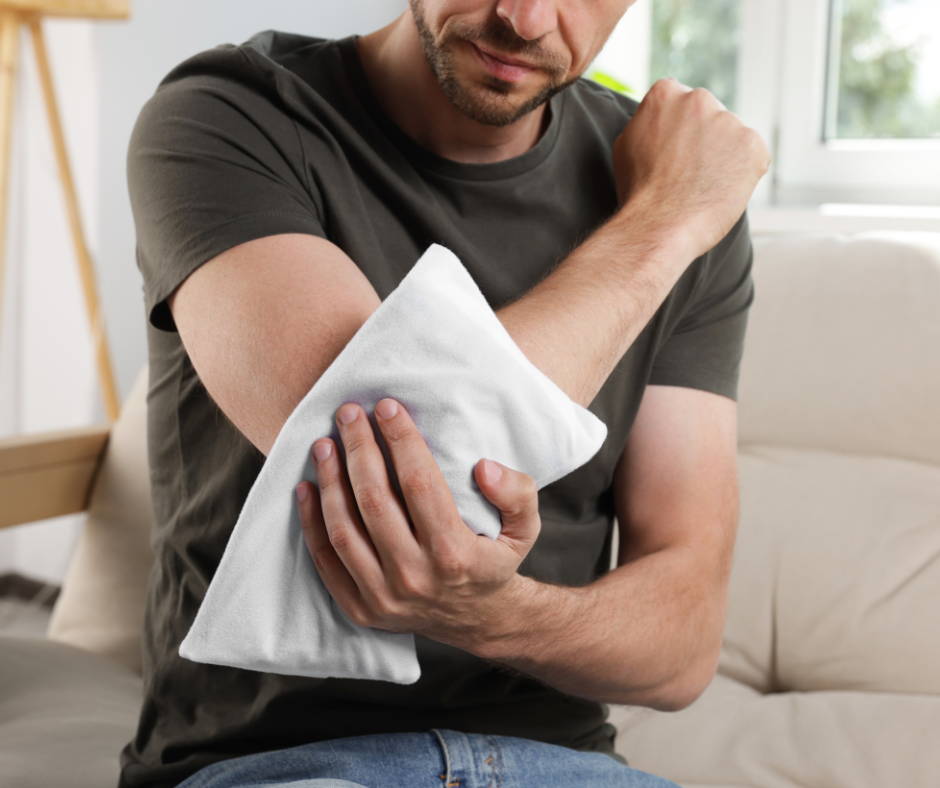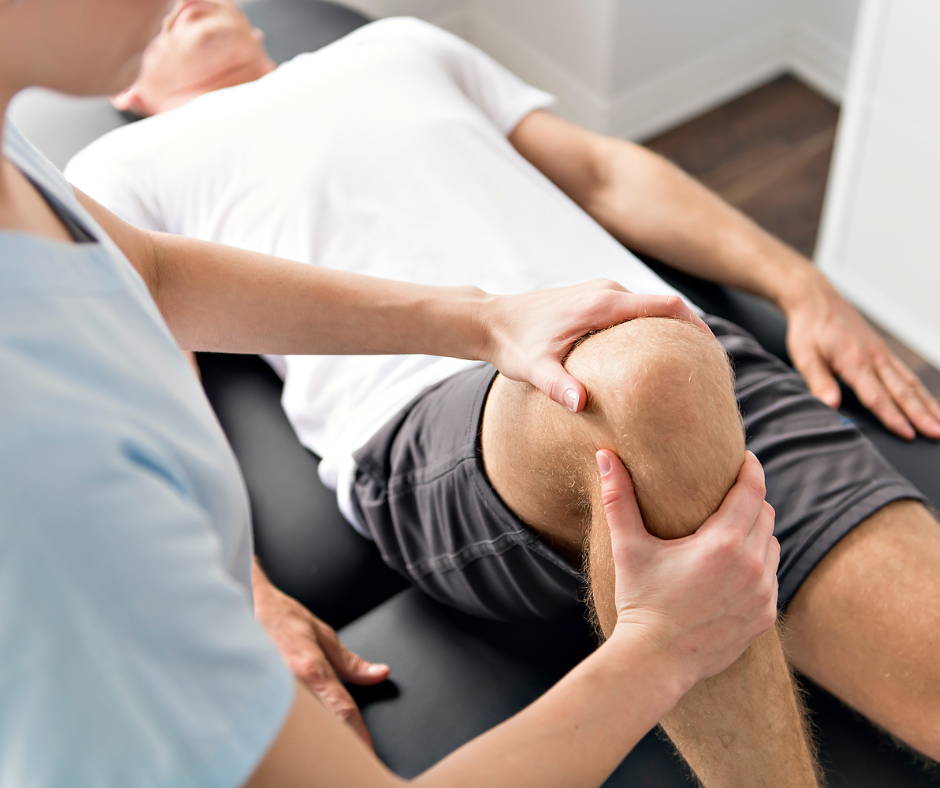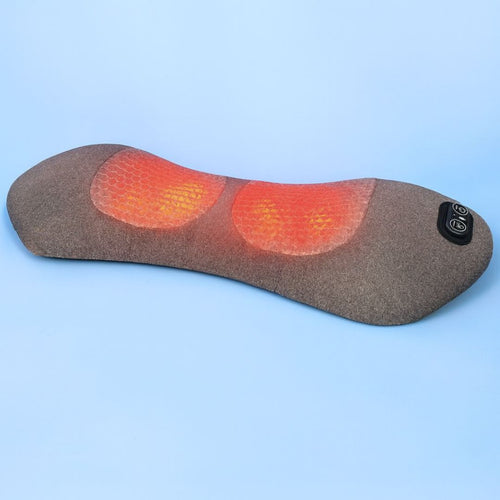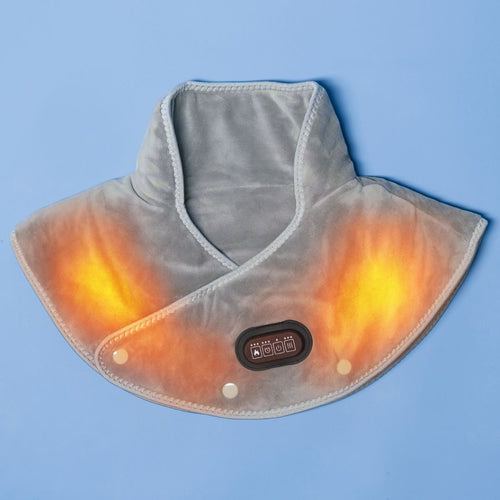Natural Pain Relief Products You Can Use at Home
By Holly Grace Callis | Published on May 14, 2025

Pain has a way of creeping into our daily lives—whether it’s a dull ache in the lower back, swelling in the knees, or tightness that builds in the shoulders after a long day. For many people, discomfort becomes a regular part of life. And while over-the-counter pain relievers and nonsteroidal anti-inflammatory drugs (NSAIDs) offer quick relief, they aren’t always the best long-term solution.
Natural pain relief products give your body another option. They don’t replace medical treatment when it’s needed, but they can help you manage symptoms, reduce inflammation, and feel more in control of your health. Whether you’re managing chronic pain, recovering from an injury, or simply looking for ways to ease everyday tension, there are at-home tools that can help.
This blog explores a variety of natural pain relievers that are easy to use, gentle on the body, and effective for easing inflammation, reducing muscle tension, and supporting your well-being.
Why Choose Natural Pain Relief?
Pain is your body’s way of sending signals that something needs attention. But when that signal gets stuck—like in the case of chronic pain—it can disrupt your health, mood, and energy. Standard pain medications work by blocking those pain signals, often through chemicals that interact with the brain and nervous system. And while this can bring temporary relief, it doesn’t always address the root cause of the problem.
Many people are concerned about the long-term use of over-the-counter drugs. NSAIDs, for example, are commonly used for inflammation and swelling but can cause stomach issues, increase blood pressure, and interact with other medications. Others worry about becoming too reliant on medications, especially when the pain becomes part of everyday life.
Natural pain relievers, on the other hand, tend to support the body’s own healing systems. They work by reducing inflammation, calming the nervous system, and encouraging blood flow to injured or tight areas. Rather than simply masking symptoms, natural methods help restore balance and function—without the same risk of drug interactions or side effects.
For many, natural pain relief is a first-line treatment. For others, it’s a way to reduce their dependence on medication or avoid surgery. Whatever your reason, these tools can become a reliable part of your daily health routine.
8 of the Best Natural Pain Relievers

Let's jump into eight science-backed natural pain relievers. These are alternative treatments you can use at home that help relieve inflammation, and stop making your pain worse.
1. Heat and Ice Therapy
Heat and ice are two of the most accessible and effective forms of natural pain relief—and they work in opposite ways. Cold therapy (also known as cryotherapy) is best for sudden injuries, inflammation, or swelling. If you’ve twisted your knee, developed soreness after a workout, or noticed swelling in your ankles, applying a cold pack can help reduce blood flow to the area and ease inflammation.
On the other hand, heat therapy works by increasing circulation. It helps bring oxygen and nutrients to tight or damaged muscles and tissues, making it ideal for chronic pain, muscle stiffness, or stress-related tension. A heating pad or warm compress can be placed on the lower back, neck, or shoulders to relieve pain caused by long periods in one position.
For example, people with knee osteoarthritis often use heat before movement to loosen up stiff joints, then apply ice afterward to reduce any swelling. Both techniques are helpful, depending on the timing and type of pain you're experiencing.
What’s important is choosing the right one for the moment. Cold reduces inflammation. Heat promotes healing. And together, they form the foundation of many natural pain relief routines.
2. Essential Oils

Essential oils are concentrated plant extracts that have been used in traditional medicine for centuries. Today, they’re gaining attention for their ability to reduce pain, ease anxiety, and promote better sleep—all without the need for medication.
Peppermint oil, for example, contains menthol, which creates a cooling effect on the skin. It can reduce pain signals and ease tension headaches or muscle aches when applied topically. Eucalyptus oil is known for its anti-inflammatory properties, making it helpful for joint pain or sinus pressure. Lavender oil, meanwhile, is used to reduce anxiety, calm the nervous system, and promote relaxation—something that plays a big role in overall pain management.
These oils can be used in a diffuser, added to a warm bath, or diluted with a carrier oil (like coconut or jojoba) and applied directly to the skin. Always do a patch test first to check for skin sensitivity and avoid applying essential oils near your eyes or broken skin.
When used safely, essential oils offer a gentle but powerful way to relieve pain and support emotional and physical well-being.
3. Herbal Remedies and Supplements
Herbal medicinal products have been used for pain relief across many cultures and generations. Some of the most well-known include turmeric, ginger, willow bark, and capsaicin—all of which have shown real potential in reducing inflammation and easing pain.
Turmeric contains curcumin, a compound with strong antioxidant and anti-inflammatory properties. It’s often recommended for arthritis, joint pain, and even post-workout soreness. Ginger has similar benefits and is sometimes used for muscle pain, nausea, and menstrual discomfort. Willow bark—sometimes called “nature’s aspirin”—has been used for thousands of years and may help reduce low back pain or symptoms of osteoarthritis.
Capsaicin, derived from chili peppers, works differently. Instead of reducing inflammation directly, it helps block pain signals by affecting how the brain interprets discomfort. It’s often found in topical creams for joint or nerve pain.
While herbal remedies can be incredibly helpful, it’s important to use them carefully. They can interact with other medications or affect certain conditions, so speak to a healthcare provider if you’re taking prescription drugs or have underlying health concerns.
The key is to choose high-quality supplements and start slowly. With the right product and dosage, these herbs can offer lasting pain relief with fewer risks.
4. Foam Rollers and Stretching Tools
Tight muscles are a common cause of pain, especially in the upper back, neck, hips, and legs. One of the simplest ways to release that tension is through self-myofascial release—a technique that uses foam rollers, massage balls, or similar tools to gently stretch and massage the fascia (the connective tissue around your muscles).
Foam rollers help break up knots, increase blood flow, and improve flexibility. When you roll slowly over sore areas, you're gently lengthening tight muscles, which sends signals to the brain that it’s safe to relax. This can reduce pain and stiffness over time.
Stretching also helps. It supports mobility, posture, and circulation, especially for people who spend long hours sitting. By combining foam rolling with slow, controlled stretches, you can improve your range of motion and prevent muscle imbalances that lead to pain.
If you're new to these tools, start with a softer roller and target large muscle groups like the thighs, glutes, or upper back. Breathe deeply, move slowly, and listen to your body.
Used regularly, stretching tools can support everything from low back pain to chronic neck stiffness—and help you move more comfortably throughout the day.
5. Meditation and Breathing Exercises

Pain doesn’t live only in the body—it also affects the brain. Stress, anxiety, and emotional fatigue can all amplify the way we experience pain, making it feel worse than it physically is. That’s why calming the mind plays a critical role in pain management.
Mindfulness meditation, body scanning, and deep breathing techniques help quiet the nervous system and reduce the brain’s response to pain signals. These practices can also release feel-good hormones, lower heart rate, and reduce tension throughout the muscles and joints.
For example, practicing deep breathing during a flare-up of chronic pain can prevent the body from going into “fight or flight” mode. It helps the mind refocus, reduces anxiety, and makes pain feel more manageable.
Many patients living with long-term conditions like neuropathic pain or arthritis find that meditation doesn’t just bring momentary relief—it improves their overall quality of life.
Start with five minutes a day. Sit or lie down in a comfortable position, close your eyes, and focus on your breath. Let the exhale be slow. Let your muscles soften. With practice, this becomes a reliable tool you can use anytime pain begins to take over.
6. Topical Creams and Gels
Topical pain relievers are applied directly to the skin, where they get to work on specific points of discomfort. They’re especially useful for joint pain, muscle soreness, and localized swelling.
Natural products like arnica, menthol, and magnesium are commonly found in these creams. Arnica is often used for bruises, inflammation, and sprains. Menthol creates a cooling sensation that can override pain signals and reduce stiffness. Magnesium helps relax muscles and reduce cramps—particularly helpful for back and neck tension.
Unlike oral medications, topical products don’t travel through the entire digestive system, so they carry a lower risk of side effects. They’re also a good option for people who can’t tolerate stronger drugs or who are already taking other medications.
For best results, apply the cream to clean, dry skin and massage it in gently. Always read the label for dosage and safety instructions.
Topical treatments don’t solve every kind of pain, but they’re a great part of a broader pain relief plan—especially when used in combination with stretching or heat.
7. Supportive Pain Relief Pillows

Good sleep and proper support can make a massive difference in how the body responds to pain. Whether you’re experiencing pain from poor posture, joint discomfort, or stress-related tension, a high-quality pillow can help reduce pressure and improve spinal alignment while you rest.
The Callixe Mirella Pillow is designed with comfort and structure in mind. Its unique contour supports the natural curve of your neck and helps distribute weight evenly, making it a great choice for people with neck and shoulder pain.
The Callixe Thera Pillow offers similar benefits with a slightly different shape that focuses on upper back and spinal support. It’s ideal for relieving pain caused by long periods in one position—like working at a desk or spending time in front of a screen. Both options help keep your head, neck, and spine aligned so your muscles don’t have to work as hard while you sleep or rest.
When your body is properly supported, your muscles can release tension more easily, and your pain doesn’t get worse from awkward sleep positions or poor posture. These pillows aren’t just for bedtime—they can also be used while reclining in a chair or relaxing on the sofa for added support during recovery.
Supportive pillows are one of the simplest at-home adjustments you can make for natural pain relief. Over time, they help your body stay better aligned, which reduces strain, eases pain signals, and supports long-term muscle and joint health.
8. At-Home Massagers

For those who experience daily pain, tightness, or swelling in the legs or lower body, a quality leg massager can be a game-changer. These devices use a combination of gentle compression, vibration, and sometimes heat to reduce inflammation, improve circulation, and help relax tense muscles.
The Callixe Thera Leg Massager is a popular choice for people dealing with knee pain, post-exercise soreness, or chronic lower-body fatigue. It fits easily around the legs and uses adjustable compression levels to help boost blood flow and drain fluid that may be contributing to swelling. Many users say it’s especially helpful at the end of the day or after standing for long periods.
This kind of targeted massage stimulates the release of feel-good hormones like endorphins and can reduce the brain’s response to pain. It’s a safe, drug-free option that fits right into your daily routine. You can use it while watching TV, reading, or winding down before bed.
Massagers also complement other natural methods, like breathing exercises, meditation, or heat therapy. Used consistently, they help support physical activity and reduce the build-up of muscle tension that often leads to chronic pain.
Whether you live with arthritis, knee osteoarthritis, or simply feel tension building in your legs, an at-home massager can offer meaningful, natural relief—without stepping foot in a clinic.
9. Natural Anti-Inflammatory Agents
Inflammation is the body’s natural response to injury, but when it becomes chronic, it can lead to ongoing discomfort and long-term health issues. That’s why anti-inflammatory agents—especially natural ones—are such an important part of pain management. They help reduce swelling, ease tension, and support the healing process without the side effects of conventional medications.
Turmeric is one of the most well-known natural anti-inflammatories. Its active compound, curcumin, has been widely studied for its ability to lower inflammation and block certain molecules involved in sending pain signals through the body. Many people take it as a daily supplement or add it to food for ongoing joint support.
Ginger works in a similar way. With compounds like gingerol, it has both antioxidant and anti-inflammatory effects. It's often used to reduce symptoms of arthritis, muscle soreness, or menstrual pain. Drinking ginger tea or taking capsules can offer steady relief over time.
Other effective agents include omega-3 fatty acids (found in fish oil and flaxseeds), green tea extract, and boswellia—a plant resin used in traditional medicine to reduce pain and swelling in the joints. These all work by calming the body’s inflammatory response, which in turn helps reduce pain.
While each of these has its own strengths, the key is consistency. Taken regularly and in the right dosage, natural anti-inflammatory agents can help manage chronic pain and improve overall well-being without relying solely on over-the-counter drugs.
When to Use Natural Relief to Reduce Pain

Natural pain relief methods are a great way to take control of your health, but it’s important to know when to reach out for support. If you’re experiencing pain that’s severe, getting worse, or affecting your ability to move or sleep, it’s worth checking in with a healthcare provider.
A physical therapist can help identify the root cause of your pain and recommend strengthening exercises or treatment plans that prevent it from coming back. In some cases, pain may be related to nerve issues, structural imbalances, or underlying health conditions that require further attention.
That said, many people find that a combination of natural treatments—stretching, heat therapy, breathing techniques, and supportive tools—offers real results without relying solely on medications or invasive procedures.
It’s not about choosing one approach over the other. It’s about building a toolkit that works for your body, your lifestyle, and your long-term health. And the more you learn to listen to your body’s signals—what causes pain, what reduces it—the easier it becomes to manage symptoms and feel better each day.
Building a Routine That Supports Long-Term Well-Being
One of the best things about natural pain relief is that it encourages daily, consistent care. These aren’t quick fixes—they’re habits that support your body over time. Whether you're doing a short stretching routine in the morning, applying an essential oil in the evening, or sitting with your Thera Pillow after work, you’re sending your body a message: rest is important, and relief is possible.
Movement matters, too. Gentle walks, low-impact exercise, and mobility work can all help reduce inflammation, improve circulation, and prevent stiffness. Even short bursts of physical activity can make a difference in how your body processes pain.
So does mental health. Meditation, mindfulness, and breathing exercises help train your nervous system to respond to pain more calmly. You may not be able to eliminate the pain entirely—but you can change your experience of it.
In many ways, the most effective treatment is the one you’ll actually do. Natural relief methods can be simple, accessible, and comforting—once they become part of your daily rhythm. And unlike medications that wear off after a few hours, these tools help you rebuild strength, flexibility, and resilience from the inside out.
Final Thoughts: Finding Quick Relief at Home
Pain may be common, but that doesn’t mean you have to live with it day in and day out. The body has an incredible capacity to heal—but it needs time, care, and the right kind of support.
Natural pain relief products give you a way to reduce pain gently, without depending on strong drugs or complex treatments. From heat packs and herbal remedies to breathing exercises and targeted pillows, there’s a wide range of tools available to help you feel better at home.
If you’re managing chronic pain, recovering from a flare-up, or simply want to avoid discomfort from long periods of sitting or standing, building a daily pain relief routine is a good place to start. It’s not about perfection—it’s about small, repeatable habits that support your health and well-being over time.
Whether you’re easing tight muscles, calming your nervous system, or supporting your spine while you sleep, these methods can help you feel more in control of your body—and your pain. The more consistently you use them, the more powerfully they work.









